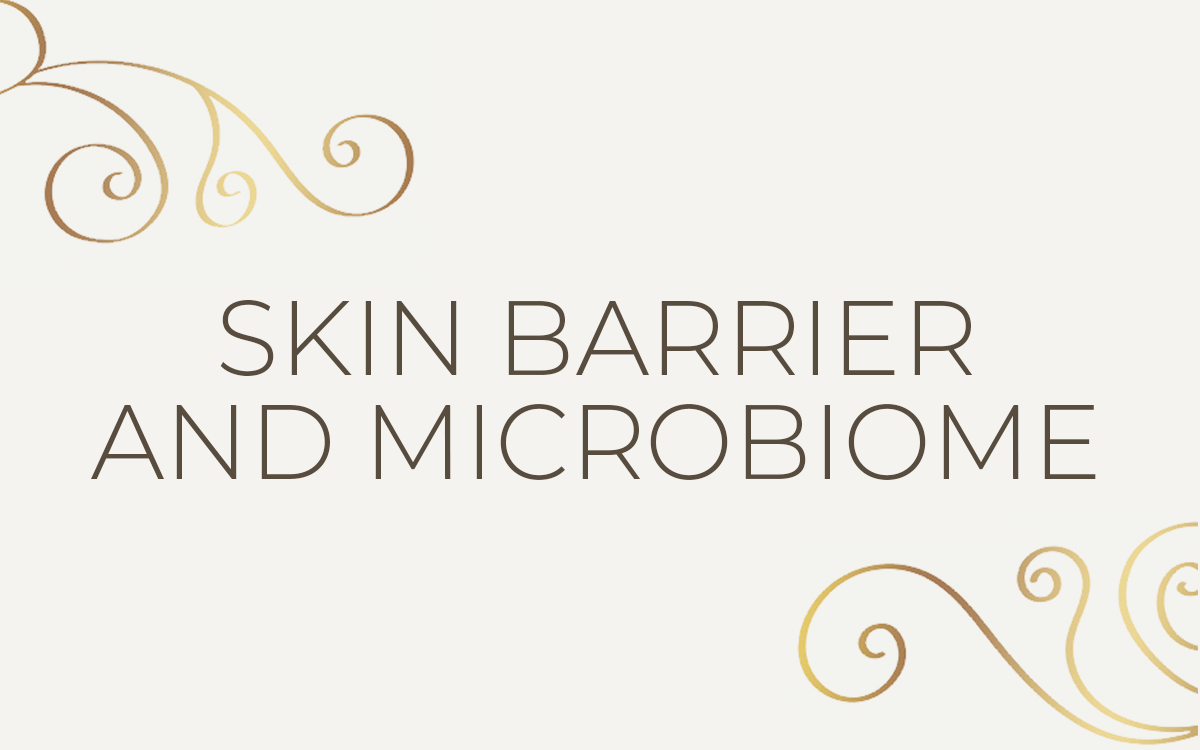Gut microbiome and inflammatory skin diseases
It is well known that the microbiome of the skin has a close connection with skin diseases. Furthermore, the gut microbiome can also affect the skin, and can influence the development of different dermatoses. The underlying mechanisms of how the intestinal microbiome can influence the skin is not completely understood, and needs further investigation, but some data on the connection between gut microbiome and psoriasis, atopic dermatitis, rosacea, acne and hidradenitis suppurativa can already be analyzed, along with clinical observations on intestinal comorbidities, gut dysbiosis and therapeutic effect of different diets and probiotic usage.
pH and skin microbiome
On the other hand, speaking of skin microbiota, an important factor in its regulation and in the skin barrier function is pH. Acids are well known for their antimicrobial activity; in fact, lactic acid, citric acid and acetic acid are widely used as antimicrobials in food production. The physiological pH of the skin surface of most body parts is acidic, in a pH range of 4.1–5.8, with some parts, such as toe interdigits and anus, exhibiting pH values between 6.1 and 7.4.
The acidic pH inhibits the colonization of the skin surface by pathogenic bacteria, while an increased pH can modify the microbiome and make the skin surface more prone to infection and eczematous reactions. Bacteria like S. aureus show an optimal growth at pH 7.5, meaning that washing the skin with alkaline soaps can facilitate the growth of these microorganisms. On the other hand, acidic detergents maintain a low skin surface pH, and can be very helpful in cases such as mild acne, which is significantly improved after application of an acidic leave-on product with pH 4. In summary, many data show that skin pH and microbiome are mutually influenced by each other.
The role of microbiome in scalp and hair follicle disease
The anatomy of the hair follicle (HF) and the dynamics of its barrier provide a special space for interactions with the underlying tissue. Given that HFs harbor a wide spectrum of microbial communities, their composition, metabolic activity and penetration depth along the HF may contribute to local outbreaks of inflammatory hair diseases typically occurring in close spatial association with the infundibulum, as observed in cicatricial alopecia.
A recent study investigated the bacterial composition on scalp surface and in infrainfundibular HF compartments using HFs plucked from lesional and non-lesional skin of patients with alopecia areata (AA), lichen planopilaris (LPP), frontal fibrosing alopecia (FFA) or healthy individuals. Results showed a marked dysbiosis in samples from patients with FFA and LPP, which, together with an enhanced presence of anti-microbial peptides, could point towards relevant cross-barrier interactions. Further studies on how bacterial colonization of the HF epithelium interacts with the barrier status under the influence of individual predisposition may help identify factors that could contribute to onset and propagation of LPP or FFA. Moreover, the recovery of bacterial DNA from plucked hair follicles represents a promising non-invasive sampling method that could help track changes in the bacterial colonization in different types of hair diseases.
Microbial transitions across urbanization
And how does the place we live in influence the composition of our skin microbiome? Urbanization represents a profound shift in human behavior, with significant cultural and health-associated consequences. At present, over 50% of the world population is living in cities and, by 2050, the proportion will exceed 66%. Metabolic and autoimmune diseases have increased in parallel with these urbanization associated lifestyle changes. What is the impact of urbanization on the skin microbiome and metabolome?
After studying an urbanization gradient ranging from the jungle to a major city in South-America, urbanization was associated to a vast decrease in bacterial diversity on hands, with an increase in chemical diversity. The natural human and plant-based molecules are largely replaced by synthetic and cosmetic ingredients on hands. It was also noted an increased diversity and an absolute abundance of fungi, along with an increase in potentially pathogenic taxa for both bacterial and fungal composition.
Overall, urbanization has large-scale effects on chemical and microbial exposures and on the human microbiota. These shifts in skin microbiome can ultimately be associated to the development of typical Western skin conditions.
Session speakers
- Andrea Szegedi – Debrecen, Hungary
- Ehrhardt Proksch – Kiel, Germany
- Annika Vogt – Berlin, Germany
- Chris Callewaert – Ghent, Belgium


